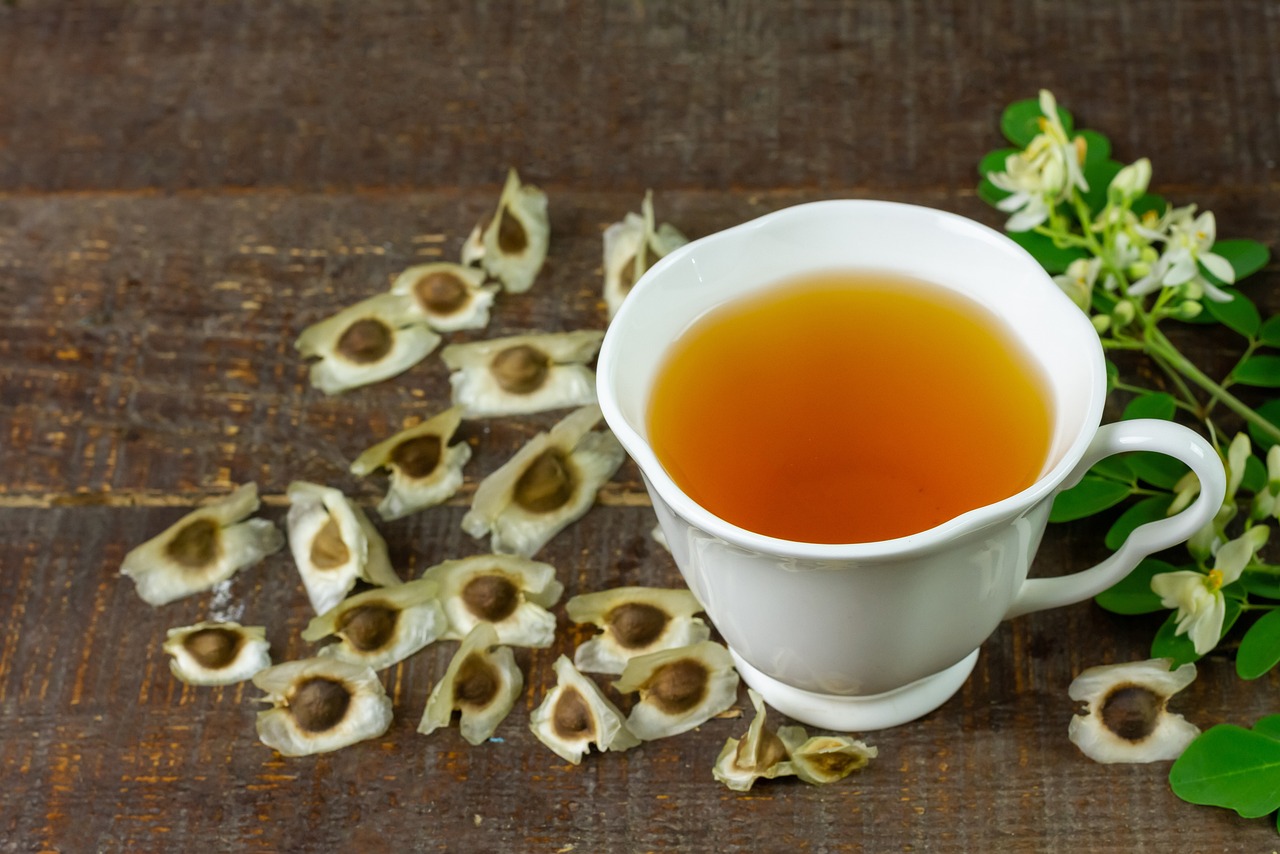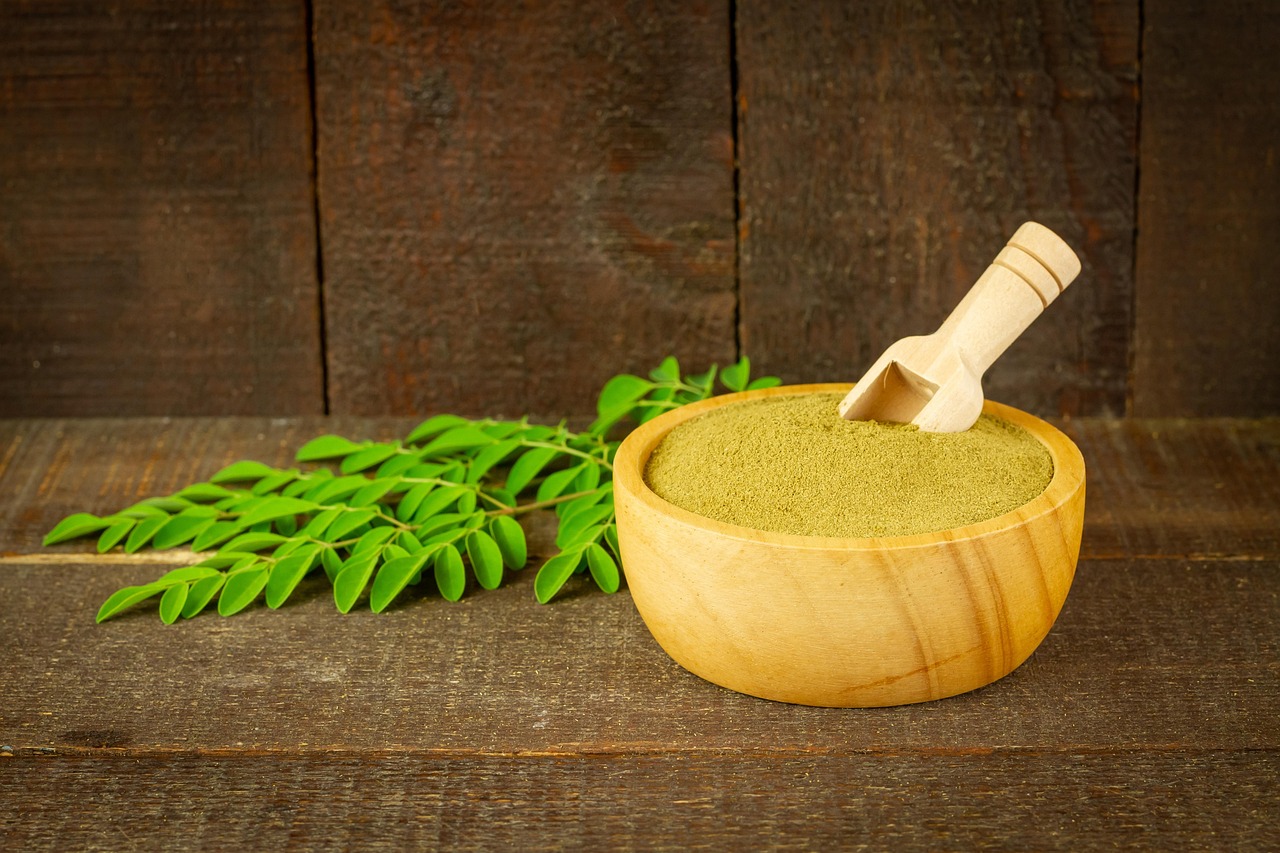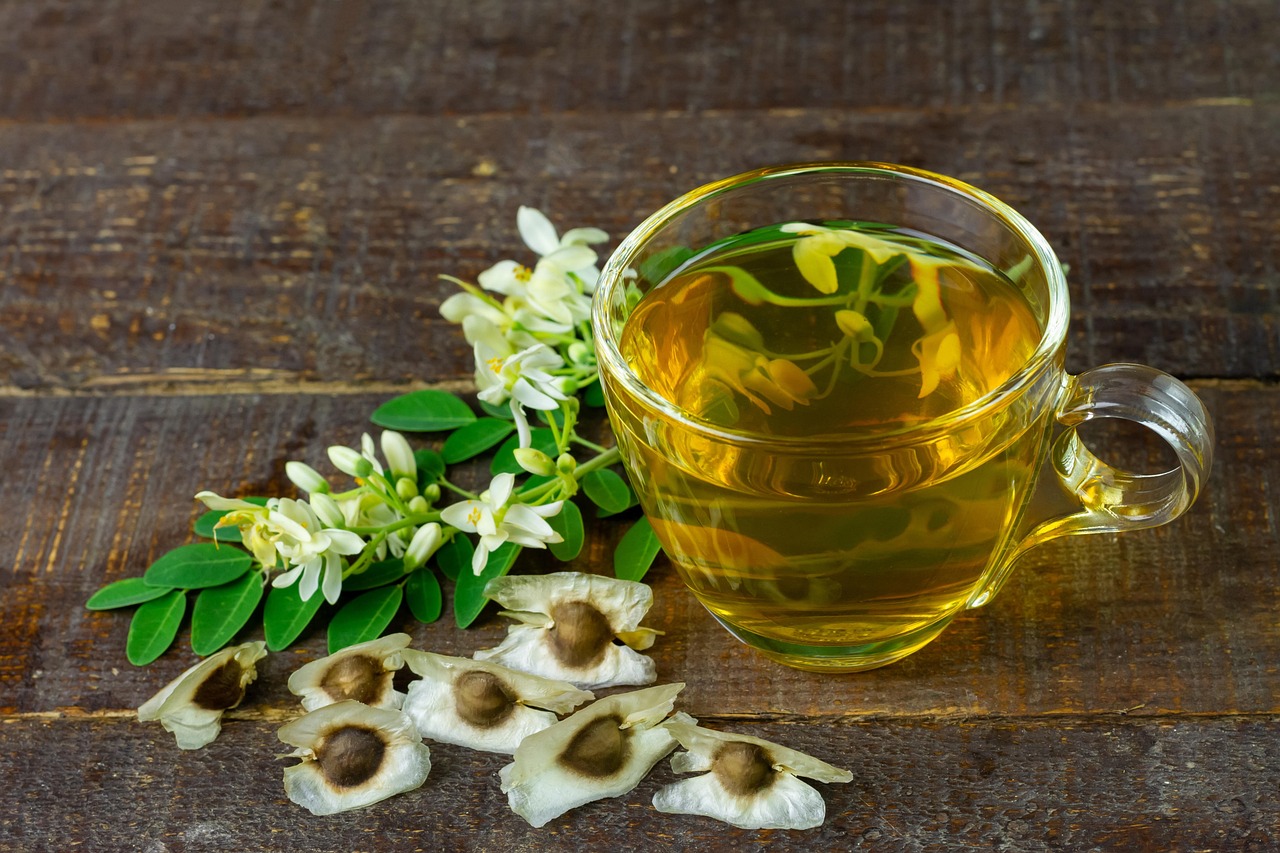The Moringa tree typically grows rapidly, reaching heights of 10 to 15 feet in just a year under optimal conditions. Leaf harvests can begin within 60 to 90 days after planting, allowing for multiple harvests throughout the growing season.
The Moringa tree, also known as the “drumstick tree” or “miracle tree,” is renowned for its nutritional leaves and versatile uses. This fast-growing tree is native to parts of Africa and Asia, thriving in various climates. Its leaves are rich in vitamins, minerals, and antioxidants, making them a valuable addition to diets worldwide.

Understanding the growth rate of the Moringa tree is crucial for farmers and gardeners aiming to maximize leaf harvests. The tree’s growth rate can be influenced by several factors, including soil quality, water availability, climate conditions, and care practices. Proper management can significantly enhance the yield of nutritious leaves.
Factors Affecting Moringa Tree Growth Rate
To optimize the growth rate of Moringa trees, it is essential to consider various environmental and agricultural factors:
- Soil Quality: Well-draining soil enriched with organic matter promotes healthy growth.
- Water Availability: Regular watering is important, especially during dry spells. However, overwatering can lead to root rot.
- Climate: Moringa thrives in warm climates with temperatures ranging between 77°F and 95°F.
- Sunlight: Full sun exposure is ideal for optimal growth, requiring at least six hours of direct sunlight daily.
- Pest and Disease Management: Keeping trees healthy by managing pests and diseases supports faster growth rates.
In addition to these factors, the age of the tree also plays a significant role in growth rates. Younger trees tend to grow more quickly as they establish their root systems and canopy.

Growth Stages of Moringa Trees
Moringa trees undergo several distinct growth stages. Each stage has unique characteristics that influence how quickly the tree can produce leaves for harvest:
- Seed Germination: The germination phase lasts about 1-2 weeks. Seeds should be planted in warm soil for optimal results.
- Seedling Stage: During this stage, which lasts about 4-6 weeks, seedlings develop their first set of true leaves.
- Vegetative Growth: From approximately 6 weeks to 6 months, the tree grows rapidly. It can reach heights of up to 6 feet during this time.
- Mature Growth: After 6 months, the Moringa tree matures and can be harvested for leaves. An established tree can grow up to 15 feet tall.
The timeline for each growth stage may vary based on environmental conditions. Adequate care during each phase ensures a robust harvest later on.
Nutritional Value of Moringa Leaves
Moringa leaves are packed with essential nutrients, making them highly sought after for both culinary and health purposes. Here is a breakdown of their nutritional content per 100 grams:

| Nutrient | Amount |
|---|---|
| Calories | 64 kcal |
| Protein | 9.4 g |
| Carbohydrates | 8.3 g |
| Fiber | 2 g |
| Vitamin A | 18% DV |
| Vitamin C | 51% DV |
| Calcium | 18% DV |
| Iron | 25% DV |
This impressive nutritional profile makes Moringa leaves a valuable addition to meals or supplements for boosting overall health. By understanding the growth rate of the Moringa tree, cultivators can ensure a steady supply of these nutrient-rich leaves throughout the growing season.
Optimal Conditions for Moringa Growth
To achieve the best growth rates for Moringa trees, specific environmental and cultural practices must be followed. These practices create optimal conditions that allow the tree to thrive and produce nutritious leaves efficiently.
Soil Preparation
Soil preparation is a critical step in establishing healthy Moringa trees. The following steps can enhance soil quality:
- Testing Soil pH: Moringa prefers slightly acidic to neutral soil, with a pH range of 6.0 to 7.0.
- Adding Organic Matter: Incorporating compost or well-rotted manure improves nutrient content and drainage.
- Ensuring Proper Drainage: Avoid heavy clay soils that retain water, as Moringa is susceptible to root rot.
Watering Practices
Watering is vital for Moringa growth. Here are some effective practices:

- Initial Watering: Newly planted Moringa trees require frequent watering until they establish their root systems.
- Deep Watering: Once established, watering should be less frequent but deeper to encourage roots to grow downward.
- Avoiding Overwatering: Ensure that the soil dries out between watering sessions to prevent root diseases.
Pest and Disease Management
Moringa trees can be affected by various pests and diseases. Proactive management is essential to maintain healthy growth rates:
Common Pests
Some pests that may affect Moringa include:
- Leafcutter Ants: These ants can strip leaves rapidly. Use organic deterrents or barriers to protect young trees.
- Aphids: These insects can weaken the tree by sucking sap. Introduce beneficial insects like ladybugs for natural control.
- Whiteflies: They can cause yellowing leaves. Regular inspections and insecticidal soap can help manage their populations.
Disease Prevention
Diseases can hinder the growth of Moringa trees. Here are prevention strategies:
- Fungal Infections: Avoid overwatering and ensure good airflow around the tree to minimize fungal risks.
- Bacterial Wilt: This can occur in stressed plants. Maintain soil health and avoid injuries to the tree.
Harvesting Moringa Leaves
The harvesting process is crucial for maintaining tree health while maximizing leaf production. Here are key considerations for harvesting Moringa leaves effectively:
Timing of Harvest
The timing of leaf harvest greatly affects the quality and yield:
- Initial Harvest: Leaves can be harvested 60 to 90 days after planting, depending on growth conditions.
- Continuous Harvesting: Regularly trim leaves encourages new growth, leading to multiple harvests during the growing season.
Harvesting Techniques
The following techniques can help ensure a productive harvest:
- Using Clean Tools: Always use clean, sharp scissors or shears to avoid damaging the tree and spreading disease.
- Selecting Younger Leaves: Younger leaves are more tender and nutritious. Focus on harvesting these for culinary use.
- Avoiding Overharvesting: Do not remove more than one-third of the tree’s foliage at any one time to maintain plant health.
Cultivation Methods for Enhanced Growth
Different cultivation methods can enhance the growth rate of Moringa trees significantly. Here are some popular techniques:
Agronomic Practices
Implementing sound agronomic practices will promote healthy growth:
- Crop Rotation: Rotate Moringa with other crops to improve soil health and reduce pest build-up.
- Mulching: Applying organic mulch helps retain soil moisture and suppress weeds.
Container Growing
Moringa trees can also be grown in containers, making them suitable for urban gardening. Key points include:
- Selecting Suitable Containers: Use large pots with drainage holes to accommodate root growth.
- Regular Fertilization: Feed container-grown trees with balanced fertilizers every few weeks for optimal growth.
This information highlights how optimal conditions, pest management, and effective harvesting techniques contribute to maximizing the growth rate and nutritional yield of Moringa trees.
Varieties of Moringa Trees
There are several varieties of Moringa trees, each with unique characteristics that can affect growth rates and leaf production. Understanding these varieties can help cultivators choose the best type for their specific conditions and goals.
Moringa Oleifera
This is the most common and widely cultivated species of Moringa. Known for its high nutritional value, Moringa oleifera is often referred to as the “drumstick tree” due to its long, slender pods. Key features include:
- Growth Rate: Moringa oleifera grows quickly, reaching heights of up to 10-15 feet in one year.
- Nutritional Content: The leaves are rich in vitamins A, C, and K, as well as protein and minerals.
- Adaptability: This species thrives in various soils and climates, making it a popular choice for cultivation.
Moringa Stenopetala
Often referred to as the “African Moringa,” this species is native to East Africa. It has some distinct characteristics:
- Leaf Size: Leaves are larger than those of Moringa oleifera and have a slightly different taste.
- Cold Resistance: Moringa stenopetala is more tolerant of cooler temperatures compared to Moringa oleifera.
- Yield: While slower growing, it produces abundant leaves, making it a good option for leaf harvests.
Moringa Drouhardii
This species is primarily found in Madagascar and is known for its unique growth habit:
- Appearance: Moringa drouhardii has a thicker trunk and can grow taller than other species.
- Use: Although not as commonly cultivated for nutritional purposes, it is valued for its ornamental qualities.
Propagation Methods for Moringa Trees
Propagation is an essential aspect of cultivating Moringa trees. Different methods can lead to varying growth rates and success rates. The primary propagation methods include seeds and cuttings.
Seed Propagation
Using seeds is a common method for propagating Moringa trees. Here are some steps to ensure successful germination:
- Selecting Quality Seeds: Choose fresh seeds from a reliable source for better germination rates.
- Pre-soaking Seeds: Soak seeds in water for 24 hours to enhance germination.
- Sowing Depth: Plant seeds about 1 inch deep in well-draining soil.
- Watering: Keep the soil moist but not soggy until seedlings emerge, which typically occurs within 1-2 weeks.
Cutting Propagation
Cutting propagation can be a faster way to establish new trees. Follow these guidelines:
- Selecting Cuttings: Choose healthy branches that are at least 1 inch thick and 12-18 inches long.
- Curing Cuttings: Allow cuttings to dry for a few days before planting to prevent rot.
- Planting Cuttings: Insert cuttings into well-draining soil, burying them about 6 inches deep.
- Watering: Water moderately until new growth appears, which may take several weeks.
Nutritional Benefits of Moringa Leaves
The nutritional benefits of Moringa leaves extend beyond just vitamins and minerals. They are known for their potential health benefits as well, making them a valuable addition to diets worldwide.
Antioxidant Properties
Moringa leaves are rich in antioxidants that can help combat oxidative stress in the body. Key antioxidants found in Moringa include:
- Quercetin: Known for its anti-inflammatory properties, quercetin may help support cardiovascular health.
- Chlorogenic Acid: This compound helps regulate blood sugar levels and may support weight management.
Anti-Inflammatory Effects
The anti-inflammatory properties of Moringa leaves can provide various health benefits:
- Soothe Inflammation: Regular consumption may help reduce inflammation throughout the body.
- Support Joint Health: The compounds in Moringa may assist in alleviating symptoms related to arthritis and other inflammatory conditions.
Nutrient Density
Moringa leaves are incredibly nutrient-dense. They contain a high concentration of essential vitamins and minerals, making them a superfood. Some notable nutrients include:
- Calcium: Important for bone health.
- Iron: Crucial for maintaining healthy blood levels.
- Amino Acids: Essential for protein synthesis and overall bodily functions.
The combination of these nutrients makes Moringa leaves a powerful addition to any diet, enhancing both health and wellness. Understanding the varieties, propagation methods, and nutritional benefits of Moringa can help growers maximize their harvests effectively.
Harvesting Techniques for Optimal Yield
Harvesting Moringa leaves effectively is vital for maximizing yield and ensuring the health of the tree. Proper techniques can lead to increased leaf production while maintaining the tree’s growth rate. Here are some recommended practices:
Timing of Harvest
Harvesting at the right time is essential to obtain the best quality leaves:
- Regular Intervals: Harvest leaves every 4 to 6 weeks during the growing season to encourage continuous growth.
- Morning Harvesting: Collect leaves in the morning when moisture levels are high, which helps preserve their freshness.
Techniques for Leaf Harvesting
Employing effective techniques can enhance the quality of the leaves harvested:
- Selective Harvesting: Focus on picking younger, tender leaves, which are more nutritious and flavorful.
- Avoiding Damage: Use sharp scissors or pruning shears to minimize damage to the branches and remaining foliage.
Post-Harvest Handling and Storage
After harvesting, proper handling and storage are crucial to maintaining the nutritional quality of Moringa leaves:
Handling Fresh Leaves
Freshly harvested leaves should be treated with care:
- Cleaning: Rinse leaves gently in cool water to remove dirt and debris. Avoid soaking, as this can cause wilting.
- Drying: If necessary, dry leaves by laying them flat in a shaded area with good air circulation to prevent spoilage.
Storage Methods
Storing Moringa leaves correctly helps retain their nutrients:
- Refrigeration: Store fresh leaves in a sealed container in the refrigerator, where they can last for up to a week.
- Dried Leaves: For long-term storage, dried Moringa leaves can be ground into powder and stored in airtight containers away from light and moisture.
Culinary Uses of Moringa Leaves
Moringa leaves can be incorporated into various dishes, making them not only nutritious but also versatile. Here are some common culinary uses:
- Smoothies: Add fresh or powdered Moringa leaves to smoothies for an added nutrient boost.
- Soups and Stews: Incorporate Moringa leaves into soups and stews for flavor and nutrition.
- Salads: Use young, tender leaves in salads for a fresh, peppery taste.
- Cooking Vegetables: Stir-fry Moringa leaves with other vegetables for a healthy side dish.
The Future of Moringa Cultivation
The increasing awareness of the nutritional benefits of Moringa has led to a growing interest in its cultivation. As demand rises, several factors could shape the future of Moringa farming:
- Sustainable Farming Practices: Emphasizing organic and sustainable practices can enhance soil health and yield while meeting consumer preferences for environmentally friendly products.
- Research and Development: Ongoing research into pest management, disease resistance, and optimal growth conditions will benefit growers seeking to maximize their harvests.
- Market Opportunities: As the health food market expands, there may be increased opportunities for Moringa products, including supplements, powders, and teas.
Conclusion
The Moringa tree is a remarkable plant, offering rapid growth rates and highly nutritious leaves. Understanding its cultivation requirements—from soil preparation to harvesting techniques—can significantly enhance yield. The various species available provide options for different climates and purposes. By employing effective propagation methods and proper post-harvest handling, growers can maximize the benefits of this superfood.
Moringa’s nutritional profile is not only beneficial for personal health but also presents economic opportunities for farmers. As awareness continues to grow about its health benefits, Moringa cultivation is likely to expand further. Through responsible farming practices and innovative marketing strategies, Moringa will remain a valuable resource for nutrition and wellness in the years to come.
This comprehensive understanding of Moringa tree growth rates and practices equips growers with the knowledge necessary for successful cultivation and harvesting, ensuring a steady supply of this nutrient-rich resource.
